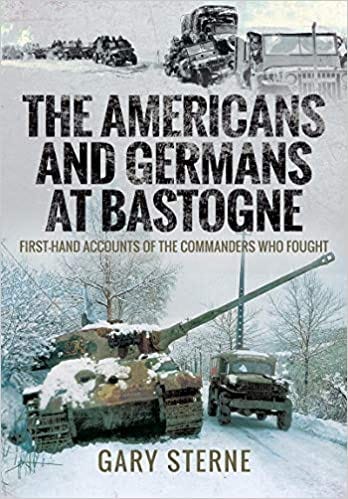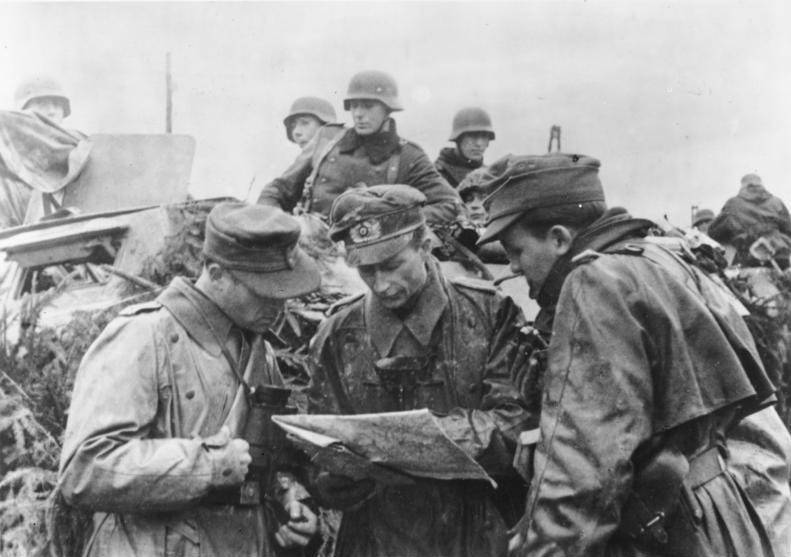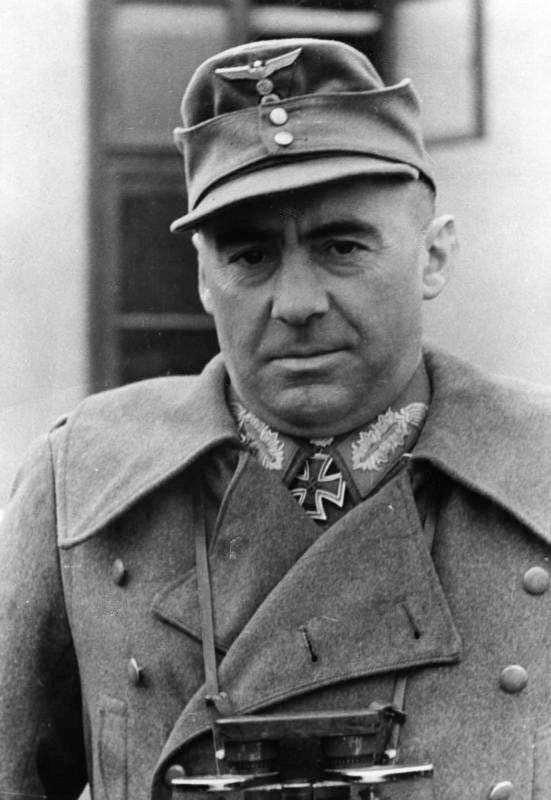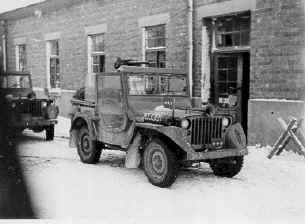The Americans and Germans at Bastogne
First Hand Accounts of the Commander's Who Fought
Seventy-seven years ago this week the German advance in the ‘Battle of the Bulge’ was effectively halted - although Hitler did not order a withdrawal until the 7th January. The relief of the besieged town of Bastogne had been achieved on the 27th December when tanks of the American Third Army broke through to the 101st Airborne Division. The legendary defence of the town by the men of the 101st ruined the overall German plans.
Gary Sterne has gathered together American and German accounts of the action by those in command, placing them side by side to let the story unravel. The German accounts come from de-classified post war interrogation reports, when the German generals involved were free to speak candidly.
This is a completely different book from A GI in the Ardennes, recently reviewed, which is very much a general introduction to the overall battle and a focus on the experiences of the private soldier. This book is much more about interpreting primary sources and will be of interest to those already familiar with the battle. The nuances of why the Germans made the decisions they did are presented very clearly. Plenty of historians have covered this material so there are no major revelations here - but it is very useful for these first hand perspectives to be gathered together for the first time.
The following account come from Fritz Bayerlein when was interrogated after the war about the conclusions he drew about Bastogne:
The first surprise for the Germans was the prompt occupation and strong defence of Bastogne and the brave determination of the US 101st Airborne. Also important was the quick movement of armoured forces in the area east of Bastogne for an aggressive defensive against the German attack.
The second surprise was the rapid turning of the American Third Army against the German southern flank. Already on 21 December the situation on each flank was such that the roads for an advance near Moircy and Remichampagne towards Saint-Hubert could be utilised only under fire of enemy tanks or armoured cars.
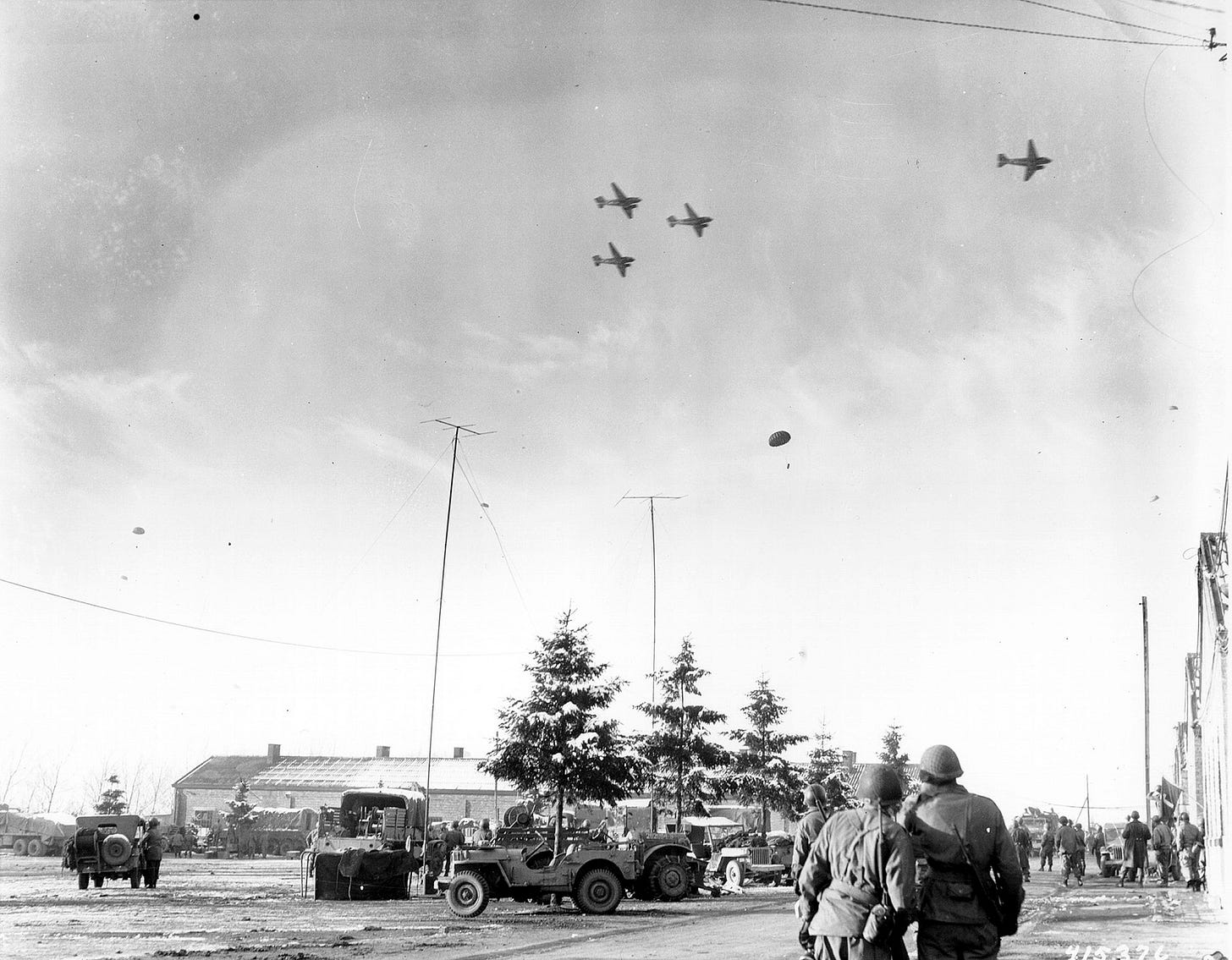
It was already one of the main issues in the preparatory discussions and the rehearsal of the attack, whether Bastogne must definitely be captured at all or not, whether by a coup, or, if this did not succeed, by a full-dress attack. (They settled in favour of the coup).
When the coup failed on 17/18 December, the question was renewed, whether it must be systematically attacked or whether we could march ahead past it and merely keep watch on it. My view was then - attack with a concentration of all available forces of the XLVII Corps.
We did not do this, however, the separate attacks were ordered. One part of the troops were to attack and another part push on toward the West. Through this decision no adequate attack was made. Then we tried to do it by appealing to the garrison to capitulate, the text being composed by Manteuffel and Luttwitz.
Finally, half of the Panzer Lehr was withdrawn from Bastogne and the fortress was to be taken by the already much weakened 26th Volksgrenadier Division. All the partial attacks failed. Hence, valuable time was lost, Bastogne was continually reinforced, and the relieving forces (American Third Army) came close and closer.
The quick capture of Bastogne was especially important for the following reasons:
1) The excellent road hub was indispensable for the offensive on the Meuse. Without Bastogne there was no good road, useable in winter, and that road was also seldom useable as a result of the continual air raids and destruction.
2) Bastogne was always a thorn in the flesh of the German troops. The corridor towards the West was too narrow without Bastogne and the base for the continuation of the attack towards the west was too narrow.
3) Bastogne constituted a continual threat to the German attack. Strong forces had therefore to be left there as a screen and therefore were missed by the forces attacking toward the Meuse.
4) Should it be impossible to absorb the flank thrust of the American Third Army from the south, Bastogne, after it had been re-united with the Third Army, formed the best springboard for the American counter-offensive to cut off the German salient or to cut off the German troops towards the West.
5) Bastogne was a particularly indispensable point for German supplies, as a traffic hub and staging point, after most of Houffalizc fell. A glance at the map is sufficient for someone with no military training to realise that Bastogne was vital for the offensive. The German command did not realise this or did not act according to that idea.
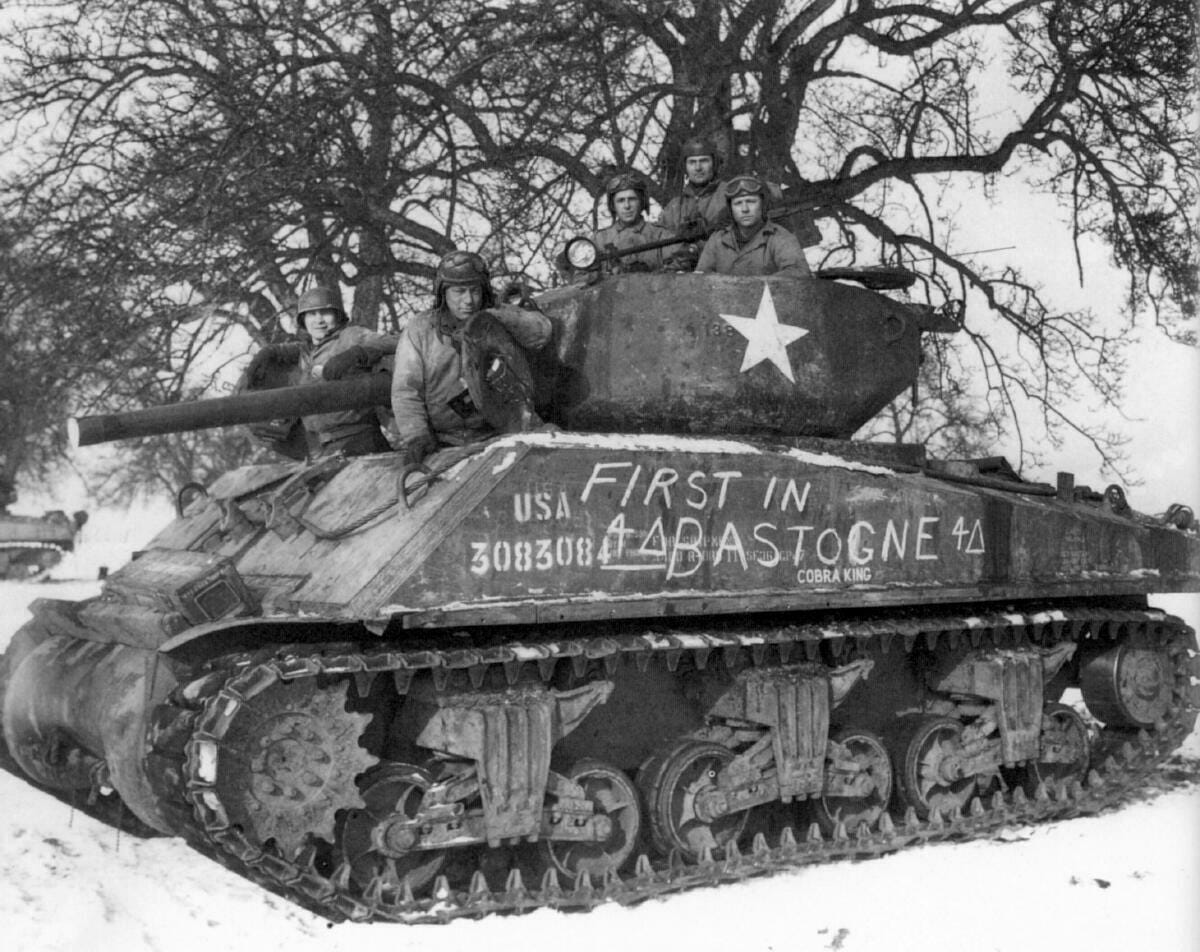
This excerpt from The Americans and Germans at Bastogne: First-Hand Accounts from the Commanders Who Fought appears by kind permission of Pen & Sword Books Ltd. Copyright remains with the author. The above images are not from this book - it does have a good selection of contemporary images and maps but they do not reproduce well here.
See also…


